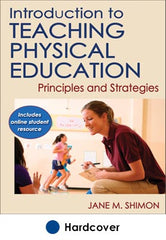Effective strategies to group students in physical education classes
This is an excerpt from Introduction to Teaching Physical Education With Online Student Resource by Jane Shimon.
Grouping Students
Scenario: Students are scattered throughout the gym as you are ready to begin class. You shut off the music as your stop signal and quickly direct students to sit down in a semicircle in the center of the gym for instruction. After your instruction, you are ready to place students into groups for skill practice or game play. How will you quickly organize the class into groups?
Most likely, one of your answers to the previous question is to have students count off (e.g., 1 through 6) to determine their groups. Although counting off by numbers does work, it is often not as effective as other methods. This strategy usually takes up too much time, some students may not honor their assigned number (change groups), a few students may jockey for a better position in line to make sure they end up with the same number as their friends, or students may forget their numbers, which is often the case with younger children. Following are other effective grouping options to consider.
Preassigned Groups
Using preassigned groups is a quick and effective method for determining practice groups or teams. You can arrange groups prior to class based on squads, ability levels, knowledge of the activity, or friends. You can also arrange students to work with those outside their normal circle of friends. Group listings can be posted on the gym wall to make the process go even faster when the time comes for students to get into groups.
Student Choice
Allowing students to select their own groups usually enhances motivation because they can work with their friends. When permitting students to select their own partner or group, ask them to get into groups of two or three, or groups of four or five instead of stipulating only even-numbered groups. For example, you might say something like, “I need you all to get into groups of two or three and begin working.” Providing an option for odd-numbered groups makes it easier for students who did not find a partner or an even-numbered group to join. In addition, to make this process go quickly, give students a time limit to get into their groups. For example, you might say, “You all have five seconds to get into groups of two or three and begin working.”
Objects (Luck of the Draw)
You can randomly hand out objects to students as they warm up or enter the gym. Items such as cards (showing numbers, symbols, shapes, or pictures) or various colored wrist bands, jerseys, or pinnies can be used. Those with similar cards or colored attire constitute students' designated groups for that task. This method also allows you to quickly change groups during the lesson. The following are just a few of the grouping possibilities you can use with a deck of cards: 9s, 10s, jacks, queens, kings, and aces (24 cards and 24 students):
- Six groups of four: four of a kind (e.g., four jacks, four queens)
- Eight groups of three: three of different suits (hearts, diamonds, clubs, or spades)
- Partners: two of a kind (two from the same suit, two from a different suit)
Random Characteristics
You can use a variety of student characteristics for grouping purposes (e.g., color of hair or clothing, month of birth, number of siblings, zodiac sign). As an example, you can have students find a group of two or three who have the same birth month or the same number of siblings. You can also use the class roster to group students based on the letter of their first or last names. The roster method allows you to prescreen the groups.
Team Captains
As stated in chapter 3, having team captains pick students out in front of the class is not an appropriate grouping method. The following are alternative methods for allowing students to pick their own teams:
- Captains can select their teams privately with the teacher while the rest of the class is involved in an activity.
- Captains can pick names out of a hat.
- Captains can pick names alphabetically.
Overall, whatever grouping methods you use, make sure they are quick and effective and match the objectives of the lesson (Lynn and Ratliffe 1999). Also, keep groups small so that students have more opportunity to be involved. Finally, it is helpful to vary grouping strategies. Following the same grouping protocol day after day will become boring and monotonous for most students.


Get the latest insights with regular newsletters, plus periodic product information and special insider offers.
JOIN NOW


